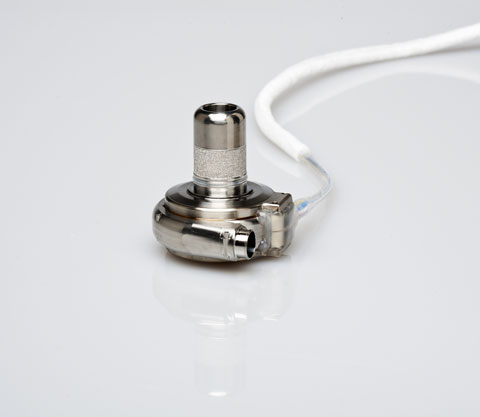Could HeartWare's U.S. Patients Be Missing Out?
HeartWare is planning to take a closer look at an algorithm built into its LVADs outside the United States to find out if it offers a clinical benefit.
May 5, 2015

Marie Thibault
The Lavare algorithm is included in HeartWare's international HVADs, but not in domestic devices.
HeartWare, one of two major makers of left ventricular assist devices (LVADs) in the United States, will begin to investigate the potential effects of a pulsatility algorithm that it has long included in its international devices but not in its domestic LVADs. The company's decision to make a closer examination of the technology, called the Lavare algorithm, stems from research presented recently at the International Society for Heart and Lung Transplantation (ISHLT) annual meeting in Nice, France.
LVADs move blood from the left ventricle of the heart into the aorta, where it is the delivered to the rest of the body. Normally, in healthy patients, blood is pumped from the left ventricle through the aortic valve into the aorta. As explained in earlier research, LVAD therapy is thought to change the aortic valve by altering pressure, either leaving too little blood volume in the left ventricle—leading the aortic valve, if opened, to have a smaller opening for a shorter period of time—or by giving the aortic valve no reason to open at all, since the pump delivers the blood from the left ventricle to the aorta.
On the April 30 HeartWare earnings call, chief executive officer Doug Godshall explained that pumps with the Lavare algorithm "slow down briefly . . . allows the ventricule to fill, and the ventricle should then have enough volume to eject normally through the aortic valve . . ."
Godshall was referring to research presented by Diyar Saeed MD, PhD, from Heinrich-Heine University in Dusseldorf, Germany at the ISHLT meeting in mid-April. The research, which Saeed conducted with colleagues, is titled "Intermittent Low Speed Software (ILS) May Reduce the Prevalence of De Novo Aortic Insufficiency in Patients Supported With HeartWare HVAD Pump." Saeed noted that new aortic valve insufficiency (AI) is found in 11-42% of patients implanted with the competitive Thoratec HeartMate II LVAD and that a closed aortic valve is known to be a contributing factor.
Saeed points out that HeartWare's European HVAD has "intermittent low speed (ILS) software," the Lavare algorithm, which allows the aortic valve to open sometimes. To test whether ILS software (the algorithm) would cut the observed rate of AI, he implanted 34 patients with the HVAD and turned on ILS two weeks after the procedure. Of the 31 patients eligible for analysis—the other three patients were excluded from analysis because of prior aortic valve surgery—the median time on LVAD therapy was 350 days (ranging from 66–1250 days). Trace AI was observed in four patients (13%) and mild AI in two patients (6%). Opening of the aortic valve (in at least 3 of 10 beats) was seen in all the patients but one, who developed moderate AI following six months of LVAD therapy. After being put on antihypertensive therapy this patient improved to mild AI.
Though a small study, Saeed felt that the lower rate of AI seen in these patients could be explained by more frequent aortic valve opening and the ILS software.
Although the Lavare algorithm software is used in HVADs outside the United States, it was not included in the company's US approval trial. Godshall explained to analysts on the earnings call, "we had already used it [the Lavare algorithm] in our international trial but the FDA at that time . . . had questions that we just were unable to answer in 2007 and 2008. And so rather than hold up the start of our trial . . . we realized it was going to materially delay our ability to start our trial just to try to answer their question."
The Lavare algorithm is used in many international centers on all HVAD patients and was used in approximately 80% of patients in the recent REVOLVE trial, Godshall said. "Until recently . . . it was a nice feature that our physicians liked, but there was not a lot of evidence to point to that said hey, this is something we really need to pull into the U.S. . . The Europeans would certainly be very upset if we took it away."
Now, Godshall said, the company has discussed the algorithm with the agency and FDA seems to be open to allowing its use in U.S. HVADs. "We expect to file amendment on this in the very near-term," he said. He noted that in the discussion with FDA, HeartWare has not been trying to claim any benefit from the algorithm, but just explaining its function. The company is working with the agency to find "the least burdensome path to get it approved," he said.
Stay on top of the latest trends in medtech by attending the MD&M East Conference, June 9–11, 2015, in New York City. |
Marie Thibault is the associate editor at MD+DI. Reach her at [email protected] and on Twitter @medtechmarie.
[Image courtesy of HEARTWARE INC.]
About the Author(s)
You May Also Like

.png?width=300&auto=webp&quality=80&disable=upscale)
